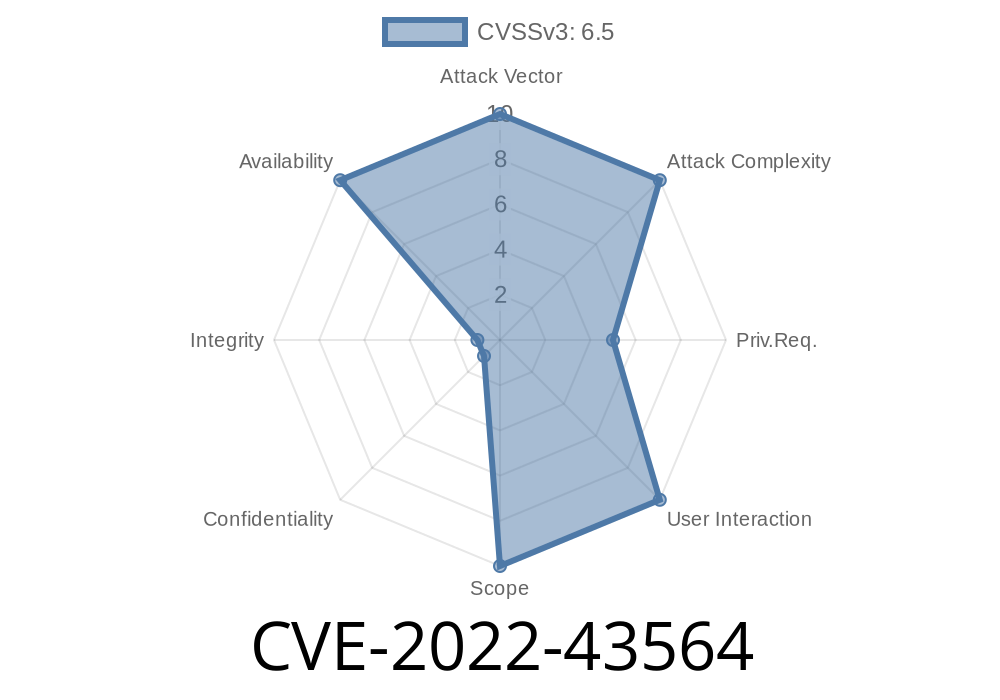CVE-2022-43564 is a newly reported vulnerability in Splunk Enterprise, a popular software platform used for monitoring, searching, and analyzing machine-generated big data. This vulnerability is present in versions below 8.1.12, 8.2.9, and 9..2 and can be exploited by a remote attacker to cause a denial of service (DoS) via specially crafted search macros and scheduled search reports.
In this long-read post, we will shed light on the details of this vulnerability, its impact, and the steps that can be taken to mitigate it. We'll also provide some code snippets and links to relevant references to help you better understand the issue at hand.
Exploit Details
To exploit this vulnerability, an attacker needs the ability to create search macros and schedule search reports on a vulnerable Splunk Enterprise instance. These permissions are typically granted to users with the 'Power' role or higher in the default configuration.
The vulnerability lies in how Splunk handles search macros, which are reusable pieces of search strings that can be included in other searches to simplify search creation and management. However, by constructing malicious search macros that include a large number of sub-searches or call other macros recursively, an attacker can create a search macro that consumes an excessive amount of system resources when executed. This could lead to a DoS condition on the affected instance.
Here is a sample code snippet that demonstrates how a specially crafted search macro could look like
# Macro definition to trigger excessive resource consumption
#[my_malicious_macro]
definition = search index=* [ my_malicious_macro ] | stats count
isable = 1
By using this macro in a scheduled search report, an attacker could cause the search query to consume an excessive amount of system resources when the scheduled search is executed, potentially causing a DoS condition on the affected Splunk Enterprise instance.
Mitigation Steps
To prevent this vulnerability from being exploited, it is recommended to update your Splunk Enterprise instance to the latest version, which contains a fix for this issue. The affected versions and their corresponding fixed versions are:
Splunk Enterprise 9..x: Update to 9..2 or later
You can access the latest Splunk release notes and download the updates here.
In addition to updating your Splunk instance, you should also perform the following steps to reduce the risk of this vulnerability being exploited:
1. Restrict the ability to create search macros and schedule search reports to users with a legitimate need for these permissions. Review and update your user roles and permissions as necessary.
2. Conduct regular audits of your search macros and scheduled searches to ensure that they are not maliciously constructed. Look for excessively long or complex search strings and search macros that may be used to consume an abnormal amount of system resources.
3. Implement logging and monitoring solutions to detect any unusual search activity or resource consumption on your Splunk Enterprise instance.
Conclusion
CVE-2022-43564 is a serious vulnerability that could have a significant impact on the availability of your Splunk Enterprise instance if left unpatched. By understanding the details of this vulnerability and following the recommended mitigation steps, you can ensure the continued security and proper functioning of your organization's valuable data analytics platform.
For more information about this vulnerability, refer to the official CVE entry and the Splunk security advisory.
Timeline
Published on: 11/04/2022 23:15:00 UTC
Last modified on: 11/08/2022 14:40:00 UTC
